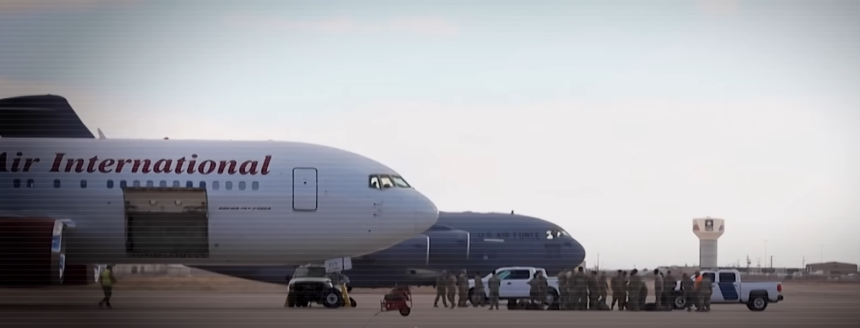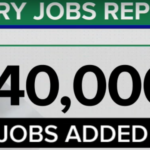In a dramatic turn of events, the United States deported 104 Indian nationals, sending them back to their homeland under strict security measures. These individuals, who had entered the U.S. through various irregular immigration routes, were flown into Amritsar, Punjab, on a U.S. military aircraft—a highly unusual method of deportation that has raised many eyebrows. This sudden move is being viewed as part of the U.S. government’s intensified immigration policies and has sparked heated debates both in India and abroad. The deportation comes just days before Indian Prime Minister Narendra Modi’s scheduled visit to Washington, adding a layer of political sensitivity to the issue.
Most of the deported individuals were reportedly seeking better job opportunities, security, and a chance at the “American Dream.” However, many of them fell prey to human traffickers and unscrupulous immigration agents who promised them legal status in the U.S. The deportees endured perilous journeys, with some crossing through Mexico, facing extreme weather, hunger, and exhaustion, only to be caught by U.S. immigration authorities. Upon being detained, many spent months in detention centers awaiting hearings that ultimately resulted in deportation orders.
Reports have surfaced that these deported individuals were handcuffed and shackled during the flight, an act that has drawn criticism and outrage from various human rights organizations and political leaders in India. Videos and images of the deportees being restrained like criminals have gone viral, leading to an uproar in the Indian Parliament, where opposition leaders have accused the U.S. of violating human rights. Indian officials have taken up the issue with their U.S. counterparts, with External Affairs Minister S. Jaishankar assuring that India will seek clarity and ensure fair treatment of Indian nationals abroad.
The timing of this deportation is particularly sensitive, as it precedes Prime Minister Modi’s diplomatic visit to the U.S. While India and the U.S. share a strong strategic partnership, incidents like these put a strain on bilateral relations. Over the past decade, India has been pressing for easier visa processes for its skilled workers, particularly in technology and healthcare sectors. However, under President Donald Trump’s administration, immigration enforcement has significantly tightened, affecting thousands of Indian nationals who sought to settle in the U.S.
Analysts believe that while this deportation will not severely impact diplomatic ties, it does highlight the challenges of illegal migration and the need for a structured policy to address such issues. India has been actively working on agreements with Western nations to allow smoother migration for skilled professionals while simultaneously curbing illegal immigration.
According to recent statistics, approximately 725,000 Indian nationals reside in the U.S. without proper documentation, making them the third-largest group of unauthorized immigrants after those from Mexico and El Salvador. The increasing number of illegal Indian immigrants has sparked concerns in the U.S., leading to frequent crackdowns and deportation drives.
One of the primary reasons behind this mass movement of Indians to the U.S. is the lack of employment opportunities in India, along with the promise of a better lifestyle abroad. However, the reality often differs significantly from the dream. Many find themselves trapped in low-paying jobs, vulnerable to exploitation, and at risk of being detained.
For the families of the deported individuals, the reality is heartbreaking. Many sold their properties or took loans to finance their migration, hoping for a better future. Now, they are left with debt and uncertainty. Several deported individuals have spoken to the media, sharing their traumatic experiences of being detained, interrogated, and sent back without a chance to explain their circumstances.
One such individual, Gurpreet Singh from Punjab, narrated how he spent nearly six months in a U.S. detention center, struggling to communicate with his family and facing mental distress. He said, “We were treated like criminals. They put chains on our legs and handcuffed us throughout the flight. We were not even given proper food.” Such stories have further fueled the anger of Indian citizens, demanding action from their government.
The Indian political opposition has used this event as an opportunity to criticize the Modi government, questioning why it failed to prevent such incidents and why Indian citizens are forced to migrate illegally due to a lack of employment opportunities at home. Opposition leaders have accused the government of focusing on foreign relations while ignoring domestic employment crises, adding to the already existing tensions in Indian politics.
The Congress party has demanded that the government take immediate steps to ensure such deportations are handled with dignity and to negotiate agreements that protect Indian workers abroad. On the other hand, the ruling Bharatiya Janata Party (BJP) has defended its stance, stating that illegal migration must be discouraged, and that India is actively working to create job opportunities to prevent its citizens from seeking unlawful migration routes.
Now that these individuals have been sent back to India, their future remains uncertain. Many will face social stigma, financial instability, and a lack of job opportunities upon their return. Indian authorities have assured that support systems will be put in place to help them reintegrate into society, but many remain skeptical.
Meanwhile, immigration experts advise Indian nationals to avoid illegal routes and instead apply for legal work permits and study visas that offer a structured pathway to immigration.
Illegal migration is not just an India-U.S. issue but a global crisis. With the rise of economic disparities and political instability in many countries, people are desperate to move to developed nations for better opportunities. However, many fall into the trap of human traffickers and fake immigration agents, leading to horrific consequences.
Countries across the world, including Canada, Australia, and the European Union, are working towards streamlining immigration policies to prevent such incidents. The U.S., in particular, has taken a strict stance on unauthorized immigrants, leading to increased deportations under both the Trump and Biden administrations.
The mass deportation of 104 Indian nationals serves as a wake-up call for both governments and individuals. While India must focus on providing better job opportunities to discourage its citizens from seeking illegal migration routes, the U.S. must ensure that deportation processes are handled with dignity and respect for human rights. As this issue unfolds, it is imperative for both nations to engage in diplomatic discussions that strike a balance between national security and humanitarian concerns. The fate of thousands of undocumented Indian immigrants in the U.S. hangs in the balance, making this a topic of great importance for policymakers, human rights activists, and affected families alike.
The dream of living in America remains alive for many in India, but the harsh realities of illegal migration serve as a cautionary tale—one that should not be ignored.






